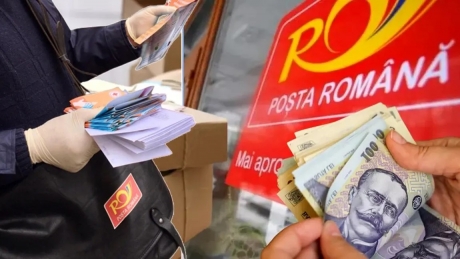Romanian entrepreneur Serban Enache, founder and CEO of Dreamstime, shares in this interview how the company he launched in 2000 has managed to get to the top and consolidate its position as the biggest stock photo community in the world.
Serban Enache, an architect and designer by formation, started Dreamstime with a simple vision: to allow people to sell their images and make money during their travels. Then, he wanted to make high-quality visuals accessible to everyone. Today, Dreamstime’s stock photo library exceeds 200 million images and videos.
Dreamstime is currently the only leading independent stock photo agency. Around 2015, it became the world’s largest stock photo community and has kept this position ever since.
“We remained one of the few stock photo leaders in the last 20 years, innovating and improving the industry throughout our journey,” says Serban Enache.
The company’s success relies on a mix of ingredients that includes technological innovation and early adoption of AI tools to make the user experience as smooth as possible for both contributors and clients, a fair royalty structure for contributors, and a good understanding of its customers’ needs that have become increasingly complex.
“If you look at the beginnings of the stock photography market when there were no social platforms, for instance, and compare it to what we have now, billions of images, clips, and reels produced in just one year, the answer to lasting long is to adapt and scale up,” Enache explains. “We’ve been through photography on film, digital cameras, mobile photography, the social network revolution, and AI generative content, adjusting to new industries and various types of audiences all the time. Change is probably the only constant.”
In the Q&A interview below, Serban Enache talks about:
- how he started Dreamstime,
- how the company has developed over the last 23 years,
- the technology that powers the largest stock photo community in the world,
- what contributors and users appreciate most about the service,
- copyright protection in the age of content,
- and the challenges raised by AI.
How did you start this journey, and what is Dreamstime today? How big is the Dreamstime stock photo community in numbers (files, contributors, users, team)?
Serban Enache: Dreamstime launched in 2000, four years ahead of Facebook. All the images we had in our first years took up less space than the videos we now receive in a single day, so the Internet was in a hugely different stage volume-wise. In 2004, we upgraded as a community, accepting images from other contributors, and in one year, more authors were submitting to stock photography than ever before in our industry. We started as designers and site builders, and because stock photo choices were few and expensive, we also dabbed our hands into photography. By the time we launched Dreamstime, we had hands-on experience with content users' and providers' needs and demands. Looking back, it is incredible how the industry has changed: our contributors are now prompting generative AI to produce content for their designs. And just like downloading stock photos, software use has to be legal and moral.
Dreamstime is currently the only leading independent stock photo agency. Around 2015, we became the world’s largest stock photo community; we still are the largest community. We remained one of the few stock photo leaders in the last 20 years, innovating and improving the industry throughout our journey.
Contrary to competitors, Dreamstime has been financially independent and profitable since its first year. Current numbers: around 227 million files online, 51 million registered users, and 1.2 million contributors (photographers, videographers, illustrators, audiographers). We have offices in the US and Romania, but other teams are working across all continents.
How have you climbed to the top of such a competitive market with many international brands, and what do you think sets you apart from other stock photo services?
Serban Enache: If you look at the beginnings of the stock photography market when there were no social platforms, for instance, and compare it to what we have now, billions of images, clips, and reels produced in just one year, the answer to lasting long is to adapt and scale up.
We’ve been through photography on film, digital cameras, mobile photography, the social network revolution, and AI generative content, adjusting to new industries and various types of audiences all the time. Change is probably the only constant.
We have moved from offering just media to integrative AI-powered solutions that reach beyond regular stock photo customers. As far as we know, Dreamstime is the only agency that employs human and AI-supported reviews in parallel, with remarkable results: over 3 million files are uploaded monthly. No AI engine is ready to replace humans, but editors should refine the work of scripts rather than do repetitive actions.
Over the years, we’ve expanded Dreamstime to include a dedicated knowledge resource: our stock photography blog section and photography tools (such as Wordpress, MS or Google plugins) to new platforms dedicated to free stock photos, Stockfreeimages, or our vetted premium stock photo collection, Megapixl.
It is crucial to keep promises to your users. Continuing to offer quality service under price pressure and huge content volumes is a privilege. We have not changed our contributors' royalty structure, which your users will always appreciate. Dreamstime still awards its contributors up to 60% of the gross price paid for a visual. Prices remain unchanged while the content quality has immensely increased.
At its core, Dreamstime is a technology company. What technology powers your vast database of over 200 million image files, and how does it work?
Serban Enache: Our journey began with a simple vision: to allow people to sell their images and make money during their travels. Then, we wanted to make high-quality visuals accessible to everyone. Today, our stock photo library exceeds 200 million images and videos. This explosive growth demanded innovative solutions to ensure a seamless user experience.
The initial infrastructure, while efficient, couldn't handle the exponential surge in data, so we realized we needed a robust and scalable solution. We opted for a database with proven performance and reliability, ensuring fast loading times. A caching layer was implemented to significantly reduce the database load and improve responsiveness in our early stages. This proved a winning point; we run a massive database with minimal infrastructure costs compared to competitors.
Finding the perfect image or video became increasingly challenging as our library expanded. We needed a search engine capable of navigating vast data volumes with precision and speed. We chose a leading search engine renowned for its ability to handle complex queries and deliver relevant results in a fraction of a second. Its ability to understand and differentiate between plurals vs. singular, syntax, and topic is remarkably ahead of competitors and, in many cases, on par with or above the leading search engines.
These strategic infrastructure upgrades have yielded remarkable results. We have faster data retrieval, and users can access and explore the vast library with remarkable speed and ease. We boast a flexible architecture that can easily accommodate future growth, ensuring a smooth experience. Our intuitive search engine helps users discover the perfect visual content effortlessly.
Our team is constantly innovating and pushing the boundaries of technology to create an even more vibrant and accessible platform for our community. Our dedication to scaling efficiently ensures that everyone can continue to enjoy the power of storytelling through visuals.
What are some of Dreamstime’s features that are more appreciated by your users?
Serban Enache: Small details make a significant difference. The key ingredients are listening to your audience and using your product. And we’ve seen tons of people using each of these. There’s a feature for everyone, so we can receive fantastic content from people outside the industry who were not pros or fancied themselves as professional photographers initially. People became pros while creating their Dreamstime portfolios.
We sell stock photography, illustrations or the more popular vectors, raw files, stock footage video clips, audio, and, recently, generative AI content.
Our site launched when digital cameras were just released on the market, and photographers were debating whether the speed of digital outperforms the quality of the film. Then, people started using their mobile phones to take photos, and we launched dedicated stock photo apps for designers and content creators. We migrated from a website-only platform to providing several channels to submit or download content: mobile apps, FTP, API, remote tracking, and cloud synchronization. You can turn ON your Airplane more and still be able to submit images to Dreamstime during your flight. We also discovered that users were eager to send us their content instantly, but providing keywords was tiresome, so we’ve added AI-supported automatic tools to keywords the media submitted. This is one popular feature with contributors.
The website has been used by top collections and amateurs alike. The same goes for the designers downloading images. Dreamstime provides accounts to all major advertising agencies, creative powerhouses, and top corporations, but it also caters to the everyday needs of small design studios and work-from-home freelancers.
Artificial intelligence has augmented our advanced search filters in recent years, and we have even added seasonal and regional search filters. We suggest content based on both visual searches and additional keywords. Users can include or exclude specific content, such as the number of people in a photo or their ethnicity, select ratio, primary color, RAW/vector filters, AI content only.
In addition to the broad array of content, there are various tools and features, such as free media editing, which is always appreciated by designers on low budgets, plugins for fast editing, and our own PhotoEye image tracking and machine learning API, providing AI capabilities remotely. Major corporations reach out to use our visual inventory for AI training or machine learning capabilities. Not to be forgotten, we just launched our Romanian version: you can now search for Fotografii Stock in Romanian, which was long overdue.
We have tried to be an all-encompassing media service. Customers come for a visual, but in reality, their needs are more complex today, so we’re developing and adding new features or updating the existing ones virtually every day.
How much do the most successful Dreamstime collaborators earn, and what type of images generate the highest revenues for photographers in your community?
Serban Enache: One of the main advantages of Dreamstime is that everyone gets a fair chance to sell their media at all times. Our search engine is built so that media is displayed to the potential buyers in rotation over periods. Chances are you will see your images pushed in front, other times in the back, and so on. This ensures contributors have constant revenues and motivation to upload higher-quality content.
Of course, there are seasonal ups and downs, but revenue for our collaborators can reach thousands of dollars per month. We are referring mainly to established yet active contributors whose content variety and volume generate considerable royalties, but small, very good portfolios can also earn significant amounts. The beauty of royalty-free is that your media may sell countless times, which generates residual or passive income and, for others, a whole new industry, the gig economy. Unless you sell the rights for a file, you can sell it indefinitely, and one single image can generate a passive income of thousands of dollars over time.
One of Serban’s images as an example:

The upload process is straightforward: drag and drop your photos from your computer, you can use one of our apps, or you can synch your Insta accounts with Dreamstime for instant, automatic upload.
Most contributors approach uploading eclectically, in the sense that they are here to make money, and they upload subjects that sell, perfecting their skills and portfolio in that direction, mixing this with their passion for photography and craving for artistic satisfaction. We release a yearly report of best sellers and send monthly notifications about the latest stock photo trends, but the concepts that stick and sell well revolve around business, diversity, sustainability, and family. Vectors and backgrounds are always in huge demand and generate downloads if well executed.
What are the biggest challenges in managing a stock photo service today? What challenges does the AI bring? How do you protect against copyright infringement in an age when vast amounts of content are generated daily and shared across platforms?
Serban Enache: The stock photography industry has yet to expand fast enough beyond the margins of its specialized customers. These designers know what to download and sometimes use stock photo agencies like Dreamstime as their secret key ingredient. The industry needed to push beyond boundaries and secure licensing rights for search engines that distribute much of the visual content nowadays. Unfortunately, many people still don’t know that downloading content illegally from Google Images may and will eventually lead them to trouble.
Compared to engines scraping the Internet’s websites, Dreamstime offers an integrated, all-solution service, safe to use, and AI-enabled engine. It is a vertical engine that provides far more capabilities than a regular search engine. A vertical search may give designers the leverage they need against competitors, while a traditional Google-like engine will give you more mundane, cliche-like images. Considerable content volume is coming in, and the AI-generated content will challenge traditional royalty-free stock even though AI-generated content needs to be appropriately regulated. Then again, this industry has always been so very dynamic.
At the same time, the AI and Machine Learning channels open up a new market for us because we can now provide content outside our regular stock media business.
PhotoEye offers partners content filtering, copyright and logo detection, automatic keyword suggestion, smart cropping, privacy tools, and scalability to improve company and customer results and marketing, advertising, and creative campaigns.
Protecting intellectual property rights across borders has become more challenging than ever. An alarming percentage of images used online are misused intentionally or accidentally. Last year, we launched our proprietary copyright tracking tool, LicenseGuard, to protect our contributors. The tool monitors, detects, and flags potentially unlicensed usages across the Internet, matching images from Dreamstime's extensive database. This makes it the most comprehensive copyright tracking tool available today, considering Dreamstime hosts' visual content volume. LicenseGuard uses AI-powered scanning technology and advanced visual recognition algorithms paralleled by human review.
Our mission is simple: to ensure content creators’ work is protected and adequately compensated while providing a hassle-free experience for image users without getting entangled in complex legal procedures for either of the parties involved.
Acclaimed by the specialized media, LicenseGuard is a significant step towards the ethical and lawful use of visual content. It aims to change the narrative around copyright infringement by promoting industry-accepted practices and providing reasonable settlement solutions for creators and infringers.
One of the serious challenges of AI is the black box of current algorithms becoming even more opaque. Many industries rely entirely on engines such as Google or only Google. It is not a rule to have the best sites with the best offer listed first (for our industry, that being lowest prices, best content, and most accurate search engine). The algorithms were manipulated many times and will continue to be so in the AI era, with less curation ability from the moderators. Sometimes, you have to dig deeper for the best result, such as looking for "Dreamstime stock photos," But who knows what happens in a manipulated dialogue with an AI or in an AI-generated article that doesn't give you access to an exhaustive list of results.
BIO
Serban Enache is the CEO/founder of Dreamstime.com LLC.
Serban has over 25 years of experience in design and new media and successfully blends creative and executive abilities to manage Dreamstime, the world’s largest stock photo community. In 1998, he co-founded Archiweb, an award-winning web design company in SE Europe, and envisioned the later-to-become Dreamstime stock agency in 2000. As a designer, he has helped many companies, like Xerox, Unilever, various national universities, and private companies, establish or improve their online presence.
Serban handles the business development strategy for Dreamstime, and is deeply involved in the everyday operations of the website community. His approach is visionary, as he believes in disrupting business norms to explore new options. He is often involved in civic or philanthropic actions and believes in corporate responsibility and giving back to society.
Serban is a licensed architect and graduated from the Romanian University of Architecture & Town Planning. He lives in Bucharest, Romania, with his wife and two daughters. A regular marathon runner and a sponsor interested in new models for societal improvement, Serban loves nature, sailing, and spending quality time with his family and pet dogs.
*This interview was edited by Romania Insider for Dreamstime.

 acum 1 an
78
acum 1 an
78























 English (US) ·
English (US) ·  Romanian (RO) ·
Romanian (RO) ·